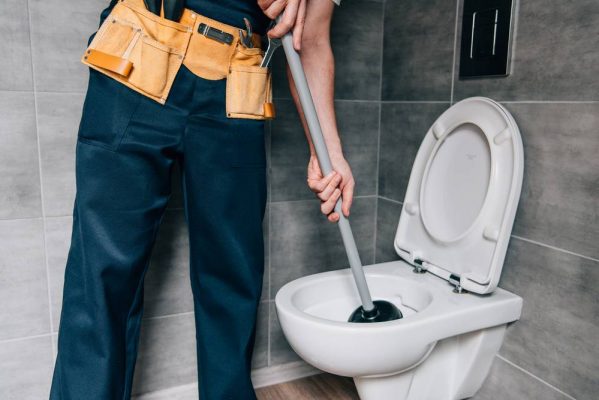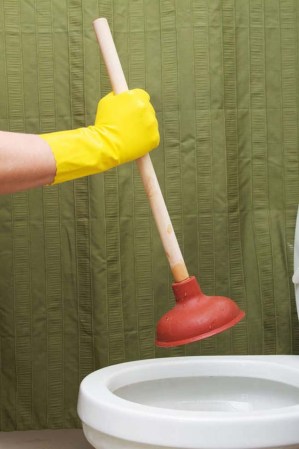Perfecting Plunger and Drain Cleaners: Crucial Tips
Perfecting Plunger and Drain Cleaners: Crucial Tips
Blog Article
Just how do you really feel on the subject of Tips on How to Effectively Use a Plunger?

Intro
Appropriate upkeep of home drains is necessary for protecting against obstructions and making sure smooth water flow. One of the trick tools in every homeowner's toolkit is the plunger, together with numerous drain cleansers developed to take on persistent obstructions properly. This write-up checks out exactly how to use plungers and drainpipe cleansers successfully to maintain your drains flowing easily.
Area 1: Recognizing Bettors
Kinds of Plungers
There are a number of kinds of bettors readily available, each designed for different types of drains and obstructs. The most typical types include mug bettors, flange plungers, and accordion plungers.
Exactly How Plungers Job
Bettors work with the principle of creating stress and suction to dislodge obstructions. When effectively applied over a drainpipe, they develop a vacuum cleaner that can pull out particles or separate obstructions.
Choosing the Right Plunger
Picking the right plunger depends upon the sort of drainpipe and the nature of the blockage. Cup plungers are ideal for sinks and bathtubs, while flange plungers are much better matched for commodes due to their style.
Usual Errors with Bettors
Preventing these mistakes guarantees efficient plunging: improper seal around the drainpipe, not enough pressure, and not clearing surrounding debris.
Section 2: Making Use Of Plungers Properly
Prep work
Prior to plunging, guarantee the bettor covers the drainpipe entirely and creates a tight seal. Clear any kind of noticeable particles around the drainpipe opening.
Strategy
Beginning with mild diving activities to develop suction. Boost pressure gradually, utilizing a stable rhythm. Repeat as necessary until the drainpipe clears.
Fixing Tips
If plunging doesn't work, try changing the seal, using petroleum jelly for a far better seal, or using a different kind of plunger.
Area 3: Understanding Drainpipe Cleaners
Kinds Of Drainpipe Cleaners
Drain pipes cleaners can be chemical or enzymatic. Chemical cleaners use strong chemicals to dissolve clogs, while chemical cleaners utilize all-natural enzymes to break down organic matter.
Exactly How Drain Cleaning Company Work
Chemical cleaners react with blockages to dissolve them, while enzymatic cleaners break down natural materials like hair and oil without harming pipes.
Safety and security Factors to consider
Always wear gloves and eye protection when utilizing chemical drainpipe cleaners. Make sure sufficient ventilation and comply with supplier guidelines carefully.
Eco-Friendly Alternatives
Consider utilizing vinegar and cooking soft drink or enzyme-based cleansers for environmentally friendly choices that are more secure for pipelines and the setting.
Section 4: Making Use Of Drainpipe Cleansers Properly
Application Strategies
Put chemical cleansers straight right into the drain opening. Permit them to work for the advised time prior to purging with warm water. Enzymatic cleansers must rest overnight.
Preventative measures
Stay clear of blending different kinds of cleaners, as this can generate toxic fumes. Never make use of chemical cleansers in conjunction with a plunger, as spilling can happen.
Dealing With Persistent Clogs
For relentless clogs, think about making use of a plumbing snake or calling a specialist plumbing to stop damages to pipes.
Verdict
In conclusion, understanding exactly how to utilize plungers and drain cleansers properly is crucial for preserving healthy and balanced pipes systems. By choosing the right tools and methods, property owners can tackle minor clogs and protect against major plumbing issues down the line.
How to Use a Plunger to Unclog a Drain
The humble plunger is a simple yet effective tool for breaking clogs in sinks, tubs and toilets. This handy tool is easy to use. You can make the most of its power if you understand how it works. Ready to dive in? Here’s what you need to know.
Safety First!
Never use a plunger with drain chemicals. Water will splash as you work, and the chemicals can spatter, burning skin and eyes. It’s a good idea to use rubber gloves and wear safety goggles when you work on a clog.
Choose the Right Tool for the Job
Plungers come in two different styles. Sinks, bathtubs and showers require a cup plunger. Like its name suggests, the rubber end is shaped like a cup. Use a flange plunger on toilets. These plungers have a rubber funnel extending from the cup. A plunger needs to be big enough to cover the drain.
Ready, Set, Plunge!
Coat the rim: Coat the plunger rim with petroleum jelly. This helps make a better seal.
Block outlets: Hold a wet rag over nearby outlets such as the overflow vent or the drain in a second sink.
Release air: Insert the plunger at an angle into the water. Water will displace air in the cup. A water-filled cup is more forceful than one filled with air.
Keep the plunger upright: Hold the plunger perpendicular to the drain. Use fast, forceful strokes, but make the first stroke gentle. The first stroke can create a splash if the cup still contains air. Thrust the plunger 15 to 20 times.
Snap off the plunger: The final stroke should be a strong upward motion that ends when the plunger snaps off the drain.
Repeat the process: you may need to repeat this sequence several times. When the water drains away, your work is done. High-five! https://plumbernw.com/blog/how-to-use-a-plunger-to-unclog-a-drain/

Application Strategies
Put chemical cleansers straight right into the drain opening. Permit them to work for the advised time prior to purging with warm water. Enzymatic cleansers must rest overnight.
Preventative measures
Stay clear of blending different kinds of cleaners, as this can generate toxic fumes. Never make use of chemical cleansers in conjunction with a plunger, as spilling can happen.
Dealing With Persistent Clogs
For relentless clogs, think about making use of a plumbing snake or calling a specialist plumbing to stop damages to pipes.
Verdict
In conclusion, understanding exactly how to utilize plungers and drain cleansers properly is crucial for preserving healthy and balanced pipes systems. By choosing the right tools and methods, property owners can tackle minor clogs and protect against major plumbing issues down the line.
How to Use a Plunger to Unclog a Drain
The humble plunger is a simple yet effective tool for breaking clogs in sinks, tubs and toilets. This handy tool is easy to use. You can make the most of its power if you understand how it works. Ready to dive in? Here’s what you need to know.
Safety First!
Never use a plunger with drain chemicals. Water will splash as you work, and the chemicals can spatter, burning skin and eyes. It’s a good idea to use rubber gloves and wear safety goggles when you work on a clog.
Choose the Right Tool for the Job
Plungers come in two different styles. Sinks, bathtubs and showers require a cup plunger. Like its name suggests, the rubber end is shaped like a cup. Use a flange plunger on toilets. These plungers have a rubber funnel extending from the cup. A plunger needs to be big enough to cover the drain.
Ready, Set, Plunge!
Coat the rim: Coat the plunger rim with petroleum jelly. This helps make a better seal. Block outlets: Hold a wet rag over nearby outlets such as the overflow vent or the drain in a second sink. Release air: Insert the plunger at an angle into the water. Water will displace air in the cup. A water-filled cup is more forceful than one filled with air. Keep the plunger upright: Hold the plunger perpendicular to the drain. Use fast, forceful strokes, but make the first stroke gentle. The first stroke can create a splash if the cup still contains air. Thrust the plunger 15 to 20 times. Snap off the plunger: The final stroke should be a strong upward motion that ends when the plunger snaps off the drain. Repeat the process: you may need to repeat this sequence several times. When the water drains away, your work is done. High-five! https://plumbernw.com/blog/how-to-use-a-plunger-to-unclog-a-drain/

I am just very involved in How to Unclog Your Sink with a Plunger and I really hope you appreciated my piece. Appreciated our blog posting? Please share it. Let another person discover it. I appreciate reading our article about How to Use a Plunger to Unclog a Toilet or Drain.
This Post Report this page